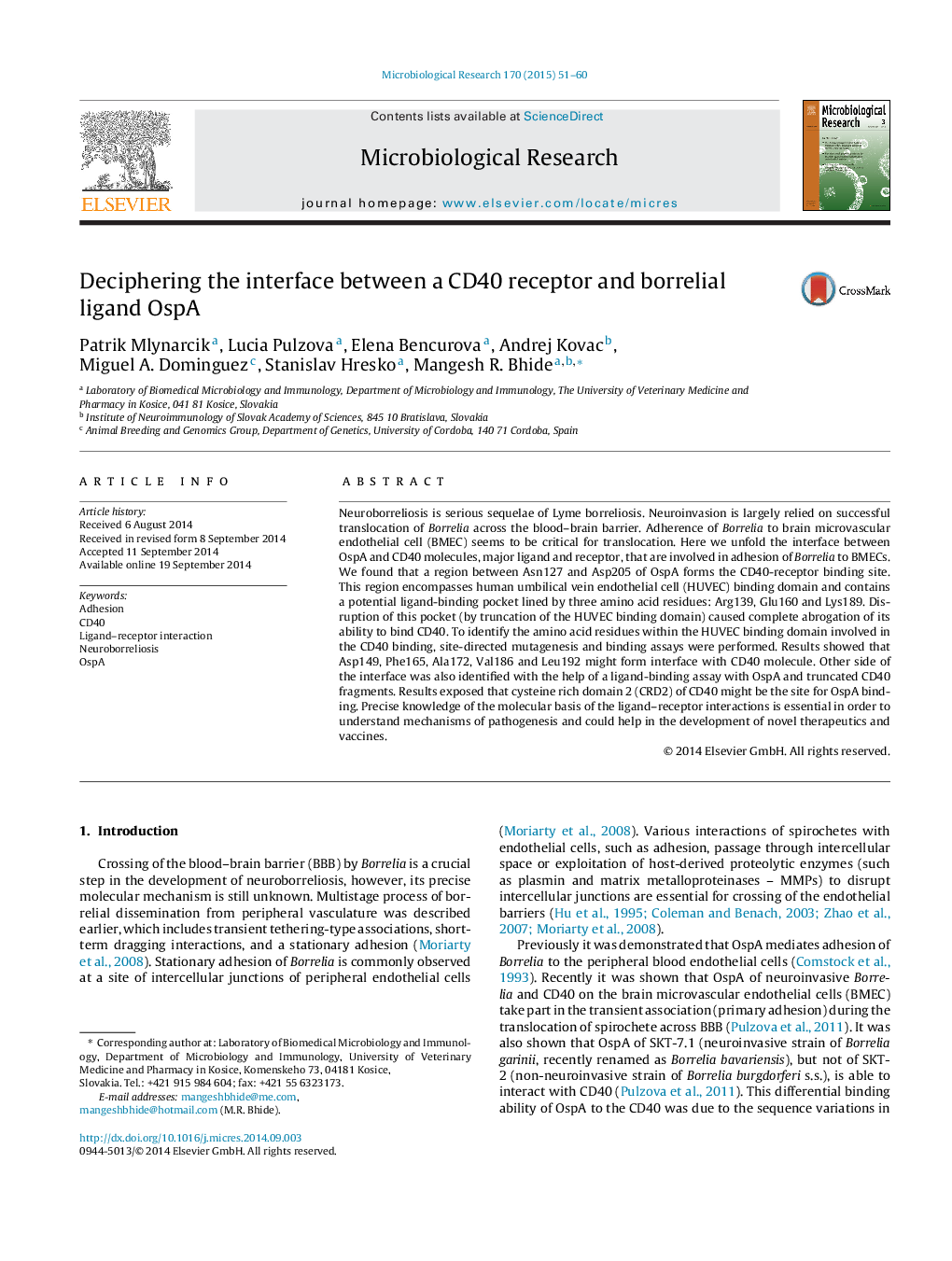| Article ID | Journal | Published Year | Pages | File Type |
|---|---|---|---|---|
| 2092122 | Microbiological Research | 2015 | 10 Pages |
Neuroborreliosis is serious sequelae of Lyme borreliosis. Neuroinvasion is largely relied on successful translocation of Borrelia across the blood–brain barrier. Adherence of Borrelia to brain microvascular endothelial cell (BMEC) seems to be critical for translocation. Here we unfold the interface between OspA and CD40 molecules, major ligand and receptor, that are involved in adhesion of Borrelia to BMECs. We found that a region between Asn127 and Asp205 of OspA forms the CD40-receptor binding site. This region encompasses human umbilical vein endothelial cell (HUVEC) binding domain and contains a potential ligand-binding pocket lined by three amino acid residues: Arg139, Glu160 and Lys189. Disruption of this pocket (by truncation of the HUVEC binding domain) caused complete abrogation of its ability to bind CD40. To identify the amino acid residues within the HUVEC binding domain involved in the CD40 binding, site-directed mutagenesis and binding assays were performed. Results showed that Asp149, Phe165, Ala172, Val186 and Leu192 might form interface with CD40 molecule. Other side of the interface was also identified with the help of a ligand-binding assay with OspA and truncated CD40 fragments. Results exposed that cysteine rich domain 2 (CRD2) of CD40 might be the site for OspA binding. Precise knowledge of the molecular basis of the ligand–receptor interactions is essential in order to understand mechanisms of pathogenesis and could help in the development of novel therapeutics and vaccines.
